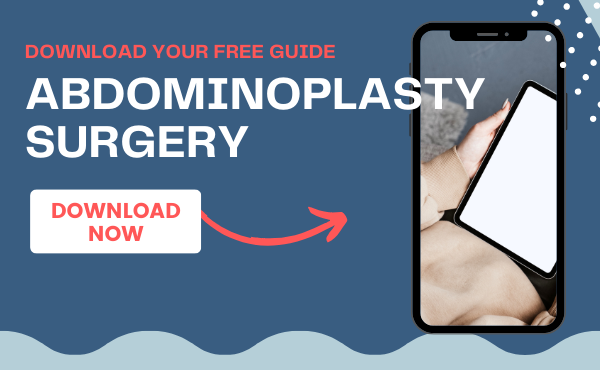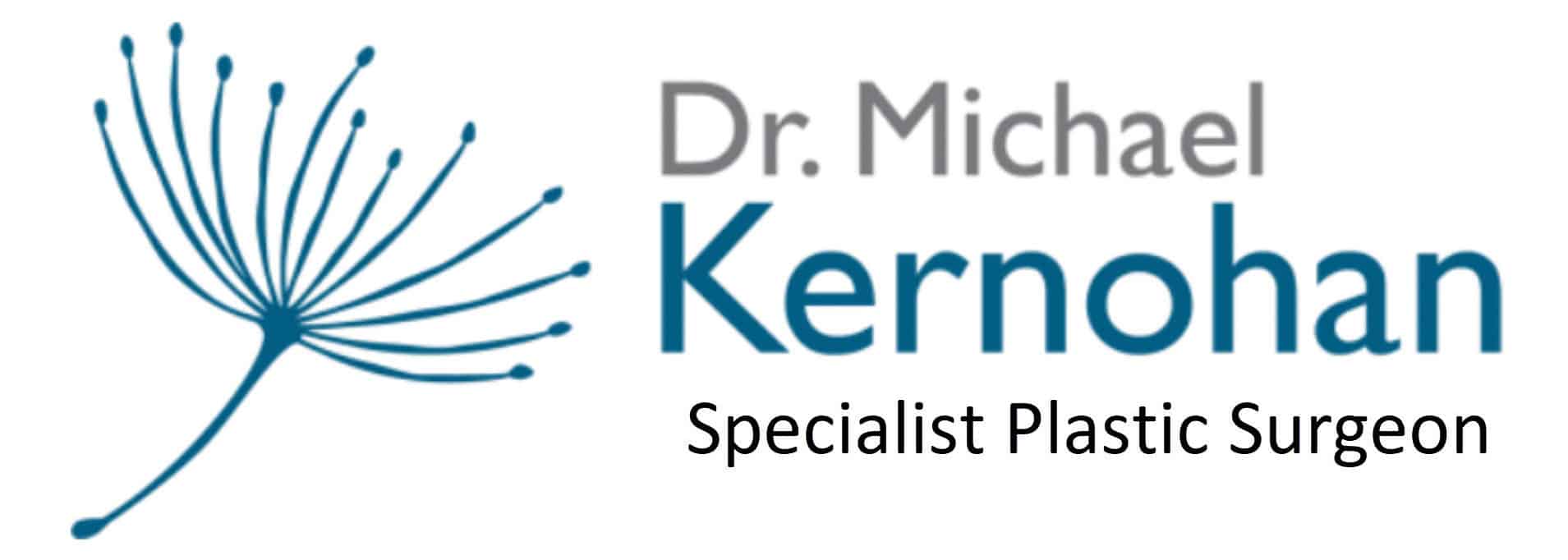Extended Abdominoplasty can represent a significant step for individuals seeking to alter the abdominal contours. This procedure is not just about removing excess skin and fat; it’s about reshaping and refining the entire lower torso. It goes beyond the scope of a standard abdominoplasty by addressing areas that extend around the hips and lower back, catering to those who require more complex contouring.
The procedure is particularly relevant for individuals who have undergone major changes in their body shape, such as significant weight loss or post-pregnancy changes. By targeting a larger area, Extended Abdominoplasty helps in achieving a harmonious profile. The procedure involves careful consideration, preparation, and understanding of what the surgery entails, its impact, and the commitment required during the recovery phase.
Dr Michael Kernohan’s expertise in this field ensures that the information is both detailed and accessible, guiding you through each step of the process with clarity and precision.
Download Dr Michael Kernohan Abdominoplasty Surgery Guide

What is Extended Abdominoplasty?
Extended Abdominoplasty, often referred to as a complex form of the traditional tummy tuck – abdominoplasty, stands out in its ability to provide a more extensive change. This advanced surgical procedure is tailored to address not just the abdominal area but also the surrounding regions, including the hips and lower back. Its design is particularly beneficial for individuals seeking a significant change, especially after major weight loss or post-pregnancy, where excess skin and fat become more prominent.
The core aim of Extended Abdominoplasty is to craft a smoother, more streamlined abdominal profile. This is achieved through meticulous removal of unwanted skin and fat, coupled with the tightening of abdominal muscles when necessary. The procedure is characterised by:
- A wider scope of treatment, encompassing the abdomen, hips, and lower back
- The removal of a larger amount of excess skin and fat compared to standard Abdominoplasty
- Potential tightening of the abdominal muscles for an enhanced shape and support
- Tailoring to individual needs, particularly for those who have undergone significant body changes
- A focus on both the physical appearance and overall comfort
Candidates for the Surgery
Extended Abdominoplasty is specifically suited for individuals who are grappling with excess skin or fat that stubbornly remains despite dedicated efforts with diet and exercise. This is especially true for those areas around the abdomen, hips, and back that can be resistant to conventional weight loss methods. Often, this procedure is a sought-after solution for those who have experienced a significant reduction in their body weight or women who have been through pregnancy and childbirth, resulting in loose skin and stretched muscles that don’t revert back to their original state.
Good candidates for Extended Abdominoplasty typically exhibit certain characteristics, such as:
- Possessing excess skin or fat in the abdominal, hip, and back regions that remains unaffected by diet and regular exercise
- Having undergone considerable weight loss, leading to sagging skin and a loss of abdominal tone
- Women who have had pregnancies, facing post-partum changes in their body shape and skin elasticity
- Being in a state of good general health to withstand surgery
- Maintaining a stable weight, as significant fluctuations could affect the surgery’s outcome
- Holding realistic expectations about what the surgery can achieve in terms of body contouring
- Understanding that this procedure is not intended as a weight loss solution, but rather as a means to refine and enhance the existing body shape
It is important to acknowledge that Extended Abdominoplasty is a significant surgical procedure. Therefore, it is essential for prospective candidates to thoroughly assess their health status and consult with a qualified surgeon to determine their suitability for this surgery. The decision to proceed should be based on a clear understanding of the potential benefits, the process involved, and a commitment to post-operative care for optimal results.
Benefits of the Extended Abdominoplasty Procedure
The most obvious advantage is the removal of excess skin and fat, particularly from the abdomen, hips, and lower back. This procedure not only eliminates these unwanted elements but also tightens the underlying abdominal muscles. As a result, you can expect a more toned and contoured body shape.
The key benefits of Extended Abdominoplasty include:
- Removal of excess skin and fat from targeted areas
- Tightening of abdominal muscles for a firmer abdomen
- Achieving a more toned body shape
Types of Procedures
When it comes to Extended Abdominoplasty, a variety of procedural types are available to cater to diverse individual needs and goals. Although the foundational principle of Extended Abdominoplasty – to remove excess skin and fat for a more toned abdominal appearance – remains consistent, the extent and focus of the procedure can vary. This flexibility allows for a personalised approach, ensuring that the specific concerns and desires of each individual are addressed effectively.
The types of Extended Abdominoplasty procedures include:
- Full Extended Abdominoplasty: This comprehensive version addresses the entire abdominal region. It is a good option for individuals seeking an all-encompassing improvement in both the front and sides of the abdomen, extending around the hips to the lower back.
- Focused Extended Abdominoplasty: Tailored for those who have specific areas of concern, this version concentrates on targeted regions. Common focuses include the lower abdomen or the hip area. It’s particularly suitable for individuals who might not require a full circumferential procedure but still seek significant improvements in certain areas.
The decision on which type of Extended Abdominoplasty to undergo is influenced by various factors:
- Your personal goals and expectations from the surgery
- The specific body areas you wish to improve
- Your overall body type and the extent of change desired
- Recommendations and assessments made by your surgeon based on their expertise
How is the Extended Abdominoplasty Procedure Performed
The process begins with a carefully planned horizontal incision made by Dr Kernohan. This incision typically runs along the lower abdomen, extending around the hips to the lower back. The placement and length of the incision are determined based on the amount of excess skin and the specific areas that need addressing.
Important steps in the Extended Abdominoplasty procedure include:
- Administering general anaesthesia for your comfort throughout the surgery
- Making a strategic horizontal incision along the lower abdomen
- Extending the incision around the hips and towards the lower back to adequately address excess skin and fat
- Removing excess skin and fat from the targeted areas to create a smoother, more even contour
- Possibly tightening the abdominal muscles if they have been stretched or weakened, particularly common post-pregnancy or after significant weight changes
- Repositioning and pulling down the remaining skin to achieve a firmer abdominal appearance
- Carefully suturing the incisions to minimise scarring and promote healing
The duration of Extended Abdominoplasty varies, often taking several hours, depending on the surgery’s complexity and the extent of correction required. Throughout the procedure, meticulous care is taken to ensure precision and the best possible aesthetic outcome. Your surgeon’s expertise plays a crucial role in not just removing excess tissue. Post-surgery, the focus shifts to recovery and healing, with specific instructions provided to support a smooth and effective recovery process.
Watch the abdominoplasty video by Dr Kernohan
Recovery after Extended Abdominoplasty Procedure
Recovery following Extended Abdominoplasty is a crucial phase where time, patience, and careful adherence to post-operative instructions play a key role in ensuring a successful outcome. After the procedure, you will go through a period of healing, marked by several stages and experiences that are quite normal in the post-surgery process. Initially, swelling and discomfort are common, but these are manageable with prescribed medication and careful post-operative care.
Main aspects of the recovery process include:
- Experiencing swelling and discomfort in the initial days following the surgery, which is a normal part of the healing process
- Taking prescribed medication to manage any discomfort and to help in the healing process
- Wearing a support garment as directed by Dr Kernohan, which is essential to support the healing tissues and help in contouring your body
- Avoiding strenuous activities, heavy lifting, and vigorous exercise for several weeks to allow your body to heal properly
- Gradually returning to work and normal activities, typically within two to four weeks, depending on the nature of your job and overall recovery
- Understanding that full recovery and the final results of the surgery may take several months to become evident as your body adjusts and heals
- Diligently following all post-operative care instructions provided by your surgeon, including attending follow-up appointments, to monitor your recovery and address any concerns
It’s important to note that every individual’s recovery is unique, and the pace of healing can vary. Regular communication with your surgeon and healthcare team is vital to ensure you are on the right track. Adhering to their advice and guidelines will not only aid in a smoother recovery but also help in achieving the best possible results from your Extended Abdominoplasty. The commitment to proper care and patience during the recovery phase is essential for a successful and satisfying outcome.
Risks of Extended Abdominoplasty Procedure
Undergoing an Extended Abdominoplasty, like any significant surgical procedure, involves certain risks that you should be aware of before making a decision. Dr Kernohan will provide guidance on how to minimise these risks, but understanding them is key to making an informed decision.
The risks associated with Extended Abdominoplasty include:
- Infection, which can occur at the site of the incisions or internally, is a risk inherent in any surgery. Your surgical team will take steps to reduce this risk, and you’ll be given instructions on how to care for your wounds to further minimise this risk
- Bleeding, both during and after the surgery, is a potential risk. While measures are taken to control bleeding during the procedure, it’s important to follow post-operative care instructions to reduce this risk
- Poor wound healing, which can lead to complications such as reopening of wounds or more pronounced scarring. Adhering to your surgeon’s advice on wound care is crucial in promoting effective healing
- Scarring is an inevitable part of any surgical procedure. The extent and appearance of scars can vary, and your surgeon will aim to minimise visible scarring as much as possible
- Complications related to anaesthesia, though rare, can occur. These might include reactions to anaesthesia or complications arising from other health conditions
Dr Kernohan will discuss these risks with you in detail and provide you with information on how to minimise them. It’s important to follow all pre- and post-operative instructions carefully and to attend all follow-up appointments. This ensures that any issues are identified and managed promptly.
Further Reading about Body Procedures with Dr Michael Kernohan
- Read Dr Kernohan’s Belt Lipectomy Surgery Page
- Read Dr Kernohan’s Liposuction Surgery Page
- Read Dr Kernohan’s Monsplasty Surgery Page
- Read Dr Kernohan’s Lower Body Lift Surgery Page
- Read Dr Kernohan’s Upper Body Lift Surgery Page
Medical References about Abdominoplasty
- Large extended abdominoplasty—dispelling the myths of prohibitively high BMI’s – PubMed
- Abdominoplasty trends 2005-2021: Increased outpatient procedures, liposuction, and heparin use – Medical News
- ‘Tummy Tuck’ Complications—Study Looks at Rates and Risk Factors – American Society of Plastic Surgeons
- Tummy tuck recovery: Timeline and tips – Medical News Today
- Tummy Tuck Surgery (Abdominoplasty) – WebMD





